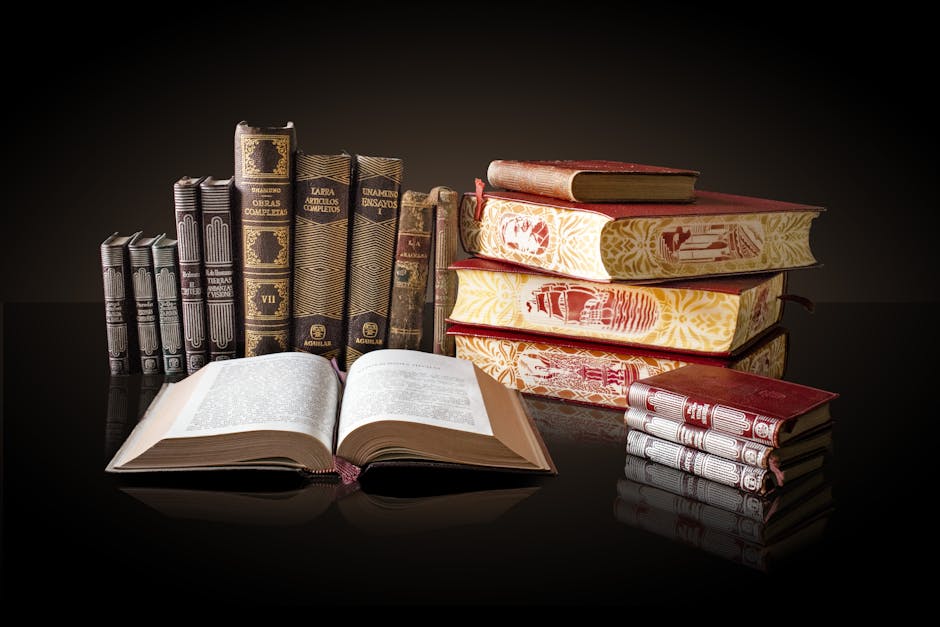Novel In Urdu
As we can see, there are many novels written in different languages across the world. Some of these languages have their own special style that makes them unique however, none compare to the brilliance of the English language.
The most well-known writers in the English language include Jane Austen, Charles Dickens, and Ernest Hemingway, just to name a few. Many people know at least one book by an established writer, which is why they recognize the writing style.
However, there are many other great authors out there who write novel-level content every once in a while! That’s what made me pick up my pen and start writing myself – I wanted to get better at writing like an expert.
My goal was to create my own identity as a writer so that I could one day be considered a professional author. In this article, you will find all sorts of tips and tricks for how to write your first novel in the English language.
2) Examples of novels in Urdu

Many great writers have written many different types of novels in the language of India – Hindi, Urdu or any other regional dialects. These include:
– Mahabharata stories
– Epic poems like The Ramayana
– Love stories
– Crime fiction
– Historical novels
– Fantasy
– Grief-focused narratives
– Horror
– Comedy
These are just some examples! There are so many more ways to write a novel in this rich literary tradition.
It is very common for people who read literature to compare the works of famous authors with each other. This can be done either within their genre (e.g., comparing an epic poem to another epic poem), or outside of their genre (comparing an adventure story to a love story).
In fact, studying the work of past masters is one of the most effective strategies for aspiring writers.
3) Ways to start a novel
In my opinion, one of the best ways to begin writing is by reading! There are so many great books out there that you can pick from to inspire you or to give you new ideas. Many people have written about the importance of reading as an activity, so I will not go into detail here.
If you’re already very familiar with the work of other writers, then choose a topic that you would like to write about and get started! By choosing a clear goal, you will be able to focus more easily.
4) Write in the first person

Writing in the first person is very common for fiction writers, but it’s not always used effectively. When authors write in the first person, too often they sound like their own self-reflection or an internal monologue.
It’s fine to use the word “I” or “me” once in every other paragraph, but otherwise try to avoid using the pronoun as your main narrator. This will distract readers who are trying to follow what is happening in the story.
Instead of saying “I was so hungry that day,” have the character say something like “That morning I woke up feeling hungry.” Or maybe “Since I started eating breakfast two weeks ago, I feel more awake and energized during my daily work hours.”
Alternatively, instead of saying “My mind was racing about all the things I had to do today,” you could narrate by saying “As I was putting away my notebook, I realized I needed to pick up some items at the store.
5) Use powerful imagery

A novel is a piece of writing that contains a story, or sequence of events. It can also include poems, statements, arguments, etc. as parts.
A good way to understand how novels work is by thinking about what kind of stories you have read before. For example, if you have read stories with heroes and villains, then a narrative with these characters’ experiences will play out like a movie.
In Pakistani literature, there are many examples of this — from Zulfikar Ali Bhutto’s Khuda Ka Faisla (God Is My Witness), which tells the story of an honest civil servant who has to deal with corruption his whole life, to Saqi Noorani’s Qabla Kia So Jaana (The Burning Heart), in which two people find love even when they believe it is impossible.
You may have heard of writers being called “storytellers”, but not all storytellers use narratives as their medium. Poets write poetry, for instance, while short stories tell a quick tale.
But if you compare any book with a straightforward non-narrative article, you will see that most books contain at least several pages of settings, descriptions, dialogue and narration. These three components make up your average chapter in a book!
This shows how important setting, description and narration are to storytelling.
6) Develop your story

Writing is not just about putting together random words and calling it a novel! Starting stories with “And then…” or “Once upon a time” does not make for a good tale.
The way to develop a strong narrative is to use events, actions, settings and characters to create a storyline that has a climax and a resolution. The climax should be something significant that moves the story forward while the resolution brings everything down to normal or retreats into silence.
A common mistake writers make is trying to include too much content without establishing a framework for them to occur within. A framework can be setting up a scene, introducing a character, explaining a concept or event, or even making a claim. It can be simple one thing like ‘and then’ or longer like ‘So now you know …’
If you want to write a book, if you really want to put yourself out there and dedicate energy towards it, then you have to get into the habit of writing everyday. No, this isn’t an excuse to sleep until noon every day and expect to produce quality work – but every week, every month, every year you need to write at least an hour and you will achieve your goal.
7) Know your audience

As mentioned earlier, writing is a tool that allows you to express yourself or convey a message. There are many ways to write, depending on what kind of reader you want to appeal to and their level of literacy.
Some people may not be educated enough to read a book so there’s nothing written down for them. Others may learn very little about literature but enjoy reading fiction novels.
There are different genres of novel available such as action adventure stories, romance, science fiction, and others. What works for one doesn’t work for another!
In order to cater to all types of readers, it is important to know who your audience is.
Does this concept sound familiar? It should because we discussed this in detail back in tip number three!
Reading genre-specific books will help you hone your skills as a writer. Test out some of these out today by picking an area of the field that sounds interesting to you and diving into a few pages.
8) Get to the point

As discussed earlier, novelists have played an important role in shaping our culture and literature. They have inspired many writers through their work, including yourself! As you may know, most Western cultures consider the English language to be the supreme tongue, which is why so much emphasis is placed on educating people in that language.
However, not everyone has access to the rich vocabulary of the English language or even knows how to speak properly when using it. This is especially true for non-English speaking countries like India.
For this reason, there are some languages that use other genres and formats as way to achieve literacy. One such genre is the novel.
Many Indian languages have adapted the form of the novel, making them just as effective as the English format in terms of educating and inspiring readers.
Urdu is one of these languages, with its own style of writing a novel. While very popular in South Asia, only recently did it become more widely known outside of the region.
Given its growing popularity, I would like to give you some tips on writing your first novel in the beautiful language of the Muslims – Urdu.
I will also include some interesting facts about the history of the Urdu language and how it connected with Islam.
9) Use theme and symbolism

As mentioned before, stories are built around themes and symbols that help tell the story. A good writer will always make sure their narrative is linked to these thems!
In Shah Nama, one of the most famous novels ever written in the Urdu language, the main character represents knowledge and wisdom. He uses his intelligence to solve problems and understand things. This theme clearly applies to this article!
By incorporating important concepts into your writing or literature review, you can use such concepts to strengthen your reading experience. And since literature is mostly about ideas and thoughts, using relevant topics as part of the storytelling process is very effective.
Take some time today to look through some books or articles and see what ideas they pack.
Novel in Urdu Pdf
Novels in Urdu are an essential part of Pakistan’s literature and culture. From romantic novels to motivational, Islamic and historical ones, readers can find a wide variety of Urdu novels in PDF and read them online. Romantic novels explore the themes of love, relationships, and emotions, while motivational ones can help readers face their struggles with courage and positivity. Islamic novels focus on the teachings of Islam and its values, while history novels provide insight into the past and stories from different eras. All these novel types are available in Urdu PDF format for readers to enjoy.
Famous Urdu Novel
- Aab-e-Hayat by Umera Ahmed
- Peer-e-Kamil by Umera Ahmed
- Udaari by Farhat Ishtiaq
- Bin Roye Ansoo by Farhat Ishtiaq
- Shehr-e-Zaat by Umera Ahmed
- Muhabbat Subh Ka Sitara Hai by Umera Ahmed
- Meri Zaat Zara-e-Benishan by Umera Ahmed
- Dil Diya Dehleez by Rukhsana Nigar Adnan
- Mohabbat Rooth Jaye Toh by Umera Ahmed
- Kaanch Ka Sach by Nimra Ahmed
Best Pakistani novels in Urdu
- Bano Qudsia’s Raja Gidh: Raja Gidh is a novel written by Pakistani writer Bano Qudsia. It is considered to be one of the greatest Urdu novels ever written. The novel is set in a rural village and follows the life of a young man, Raja Gidh, who is struggling to find his place in the world. The novel explores themes of love, loneliness, identity, and the search for meaning in life.
- Ashfaq Ahmed’s Aik Mohabbat So Afsanay: Aik Mohabbat So Afsanay is a collection of short stories by Pakistani writer Ashfaq Ahmed. The stories explore themes of love, longing, and human relationships. The stories are told from the perspectives of different characters, each with their own unique stories and perspectives.
- Umera Ahmad’s Lahasil: Lahasil is a novel written by Pakistani writer Umera Ahmad. The novel follows the life of a young woman, Noor, who is struggling to find her place in the world. The novel explores themes of identity, belonging, and the search for meaning in life.
- Intizar Husain’s Basti: Basti is a novel written by Pakistani writer Intizar Husain. The novel follows the life of a group of people living in a small village in Pakistan. The novel explores themes of family, friendship, and the search for meaning in life.
- Bapsi Sidhwa’s The Crow Eaters: The Crow Eaters is a novel written by Pakistani writer Bapsi Sidhwa. The novel follows the life of a Parsi family living in a small town in Pakistan. The novel explores themes of identity, belonging, and the search for meaning in life.
